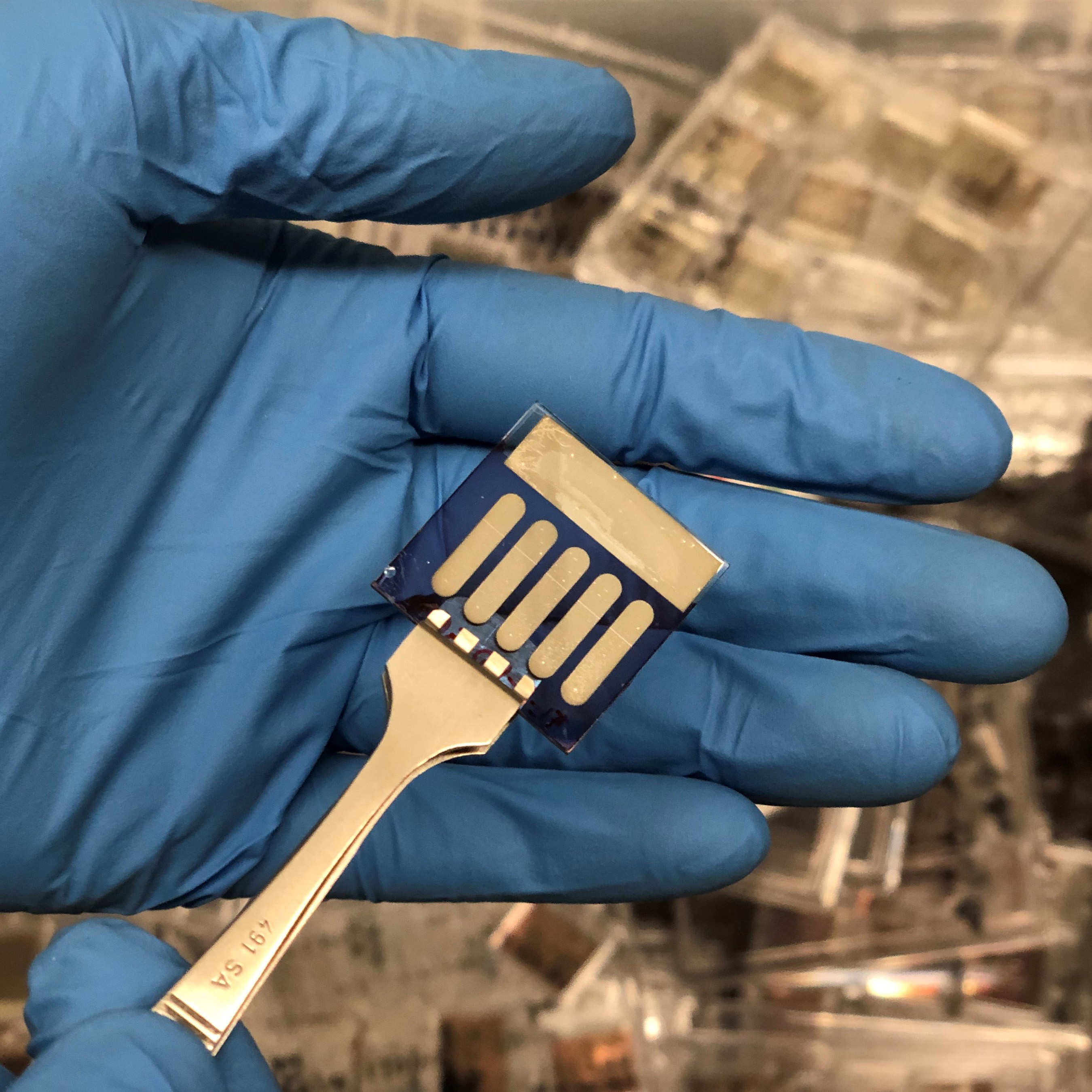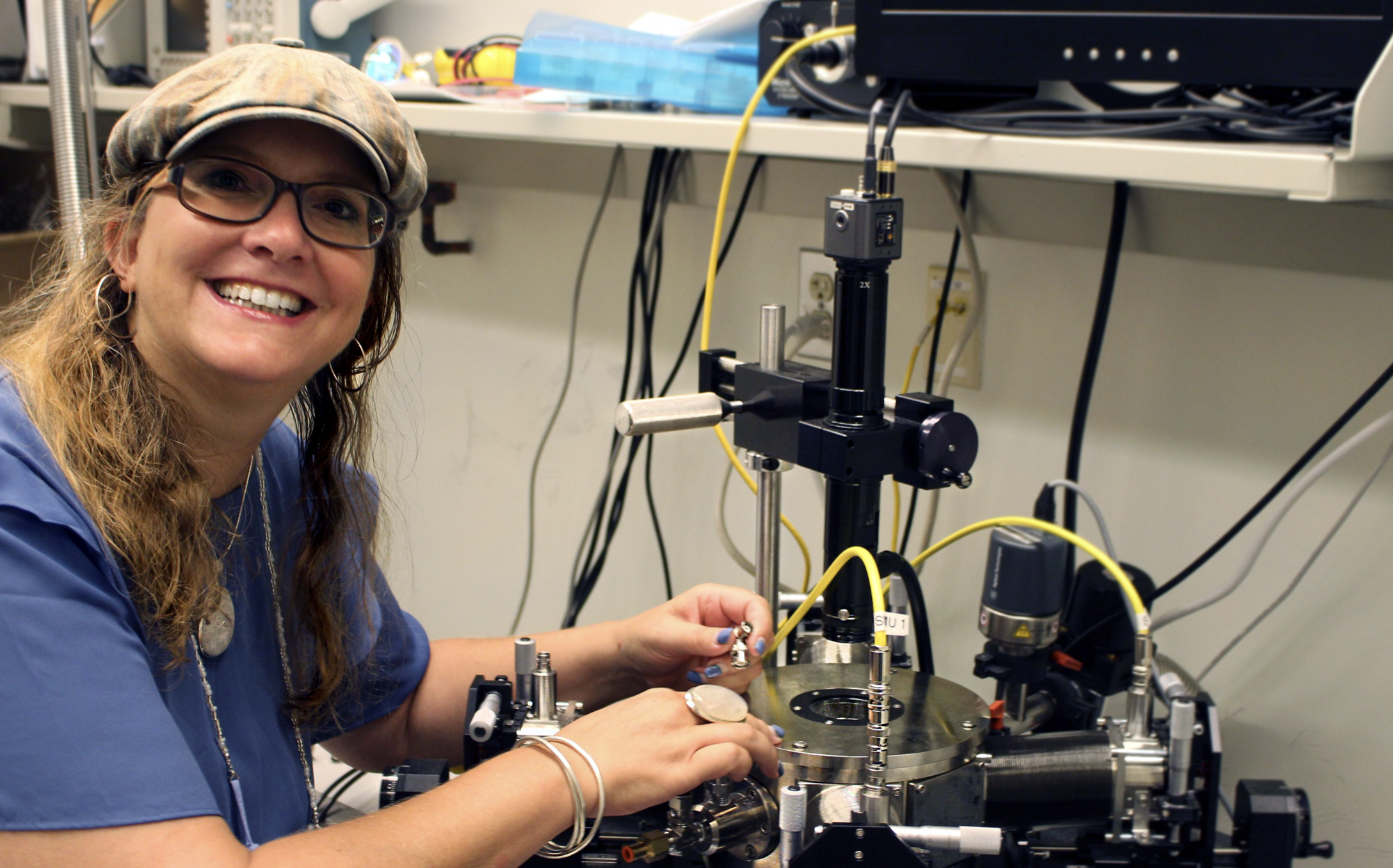Feb 18, 2022 - Atlanta, GA
Organic semiconductors already provide the energy behind optical technologies inside television displays, solar cells, and lighting fixtures. Their molecular carbon-based structure makes them cheaper to produce, more flexible, of lighter weight, and more environmentally friendly than silicon-based or composite semiconductors. The future in more applications is bright — if scientists can learn more about harnessing their ability to react to and produce light.
A team of Georgia Tech researchers brings us one step closer to understanding those properties. Their new study, published in Science Advances, for the first time brings tracking and measurement to organic semiconductor photoexcitations: particles put into “excited” or energized quantum states by light.
The semiconductors’ primary photoexcitations, called Frenkel excitons, dictate the optical qualities in those semiconductors. They can, in principle, form bonded pairs called biexcitons, but these have never been identified unambiguously. Quantifying those reactions will help researchers learn more about their properties to unlock future uses, such as more efficient and sustainable batteries and solar cells, biosensors, and new types of lasers.
“It’s a window into the basic electronic structure and properties of these materials,” says study co-author Carlos Silva Acuña, a professor with joint appointments in the School of Chemistry and Biochemistry and School of Physics, “but also into these tech applications we care about. How do we convert electrical energy to light? Or in photovoltaic applications, how do we convert solar light into electrical power? It’s more about understanding and discovering the very basic fundamental properties of materials that will allow the design of tailored materials that optimize a particular function.”
Silva Acuña and Natalie Stingelin, a professor with joint appointments in the School of Materials Science and Engineering and the School of Chemical and Biomolecular Engineering, led a team of researchers that tweaked traditional spectroscopy — how light or any other form of radiation is emitted and absorbed by materials — to track and measure the energy coming from Frenkel biexcitons. The researchers wanted to know how those photoexcitations form “bonds” between each other, how excitons find the right partners to form biexcitons, and how stable those exciton partners are.
The scientists used different spectroscopy techniques such as non-linear and coherent versions, which give researchers more flexibility in determining the energies flying back and forth between pairs of excitons. “The idea is an advanced spectroscopy that allows us to dissect interactions between excitations,” Silva Acuña says. “It’s designed to measure or resolve the interaction energy between different photoexcitations,” adding that the researchers can dissect with more detail where light from the biexcitons falls on the spectrum.
Those interactions are the foundation for any future quantum (atomic and subatomic) science applications for organic semiconductors, “because all the quantum phases we might want to induce are all governed by their interactions, and the interactions between photoexcitations are key.”
The global organic semiconductor market is expected to grow by $90.8 billion between 2020 and 2024, according to Berkshire Hathaway company Business Wire. Yet while composite semiconductors have well-studied and defined optical signatures, that’s not quite the case for organic semiconductors. “We could not find a clear optical signature of biexcitons,” Silva Acuña says. “That’s what has made them more challenging. There is a lot of theoretical prediction and calculation, but not really any experimental measurement” preceding the new Georgia Tech research, he explains.
“We can for the first time unambiguously identify bound excitons and characterize their nature. They’re attracted to what energy, repulsed by what energy, and why? How do those details relate to molecular structure?” he says. “What would we need to change to change those properties? How do we discover new materials with tailored properties?”
Silva Acuña also notes an unexpected finding in the research: Excitons that interact with each other in different polymer chains attract each other to form biexcitons — while excitons in the same polymer chain repel each other. “It’s a little bit counterintuitive that you can have two excitons repel each other, and yet they bind,” he says.
If the interaction energy between excitons is strong, a lot of excitons will end up as bound biexcitons, Silva Acuña adds. If science decides that can help add more functions to those materials, “Maybe we can design them to be even more strongly bound.” Or if it’s decided that those bonds need to be weaker for certain functions, “How can we turn them off? It’s all about material discovery.”
***
DOI: science.org/doi/10.1126/sciadv.abi5197
Authors: Along with Silva-Acuña (C.S.-A.) and Stingelin (N.S.), co-authors of the study include: Elizabeth Gutiérrez-Meza, Ravyn Malatesta, and David A. Valverde-Chávez (all of the School of Chemistry and Biochemistry at Georgia Tech), Hongmo Li and Seong-Min Kim (both of the School of Materials Science and Engineering at Georgia Tech), Ilaria Bargigia and Ajay Ram Srimath Kandada (Department of Physics and Center for Functional Materials at Wake Forest University), Eric R. Bittner and Hao Li (Department of Chemistry at University of Houston), and Sergei Tretiak (Theoretical Division and Center for Nonlinear Studies, Los Alamos National Laboratory). C.S.-A. acknowledges support from the School of Chemistry and Biochemistry and the College of Sciences at Georgia Tech.
Funding: The work at Georgia Tech was funded by the National Science Foundation [DMR-1904293 (to C.S.-A.) and DMREF-1729737 (to N.S. and C.S.-A.)]. C.S.-A. acknowledges support from the School of Chemistry and Biochemistry and the College of Sciences at Georgia Tech. The work at the University of Houston was funded in part by the National Science Foundation (CHE-1664971 and DMR-1903785) and the Robert A. Welch Foundation (E-1337). This work was also conducted in part at the Center for Integrated Nanotechnologies, a U.S. Department of Energy and Office of Basic Energy Science user facility.
***
The Georgia Institute of Technology, or Georgia Tech, is a top 10 public research university developing leaders who advance technology and improve the human condition. The Institute offers business, computing, design, engineering, liberal arts, and sciences degrees. Its nearly 44,000 students representing 50 states and 149 countries, study at the main campus in Atlanta, at campuses in France and China, and through distance and online learning. As a leading technological university, Georgia Tech is an engine of economic development for Georgia, the Southeast, and the nation, conducting more than $1 billion in research annually for government, industry, and society.


